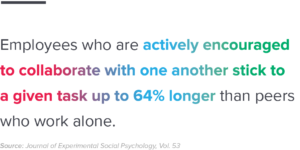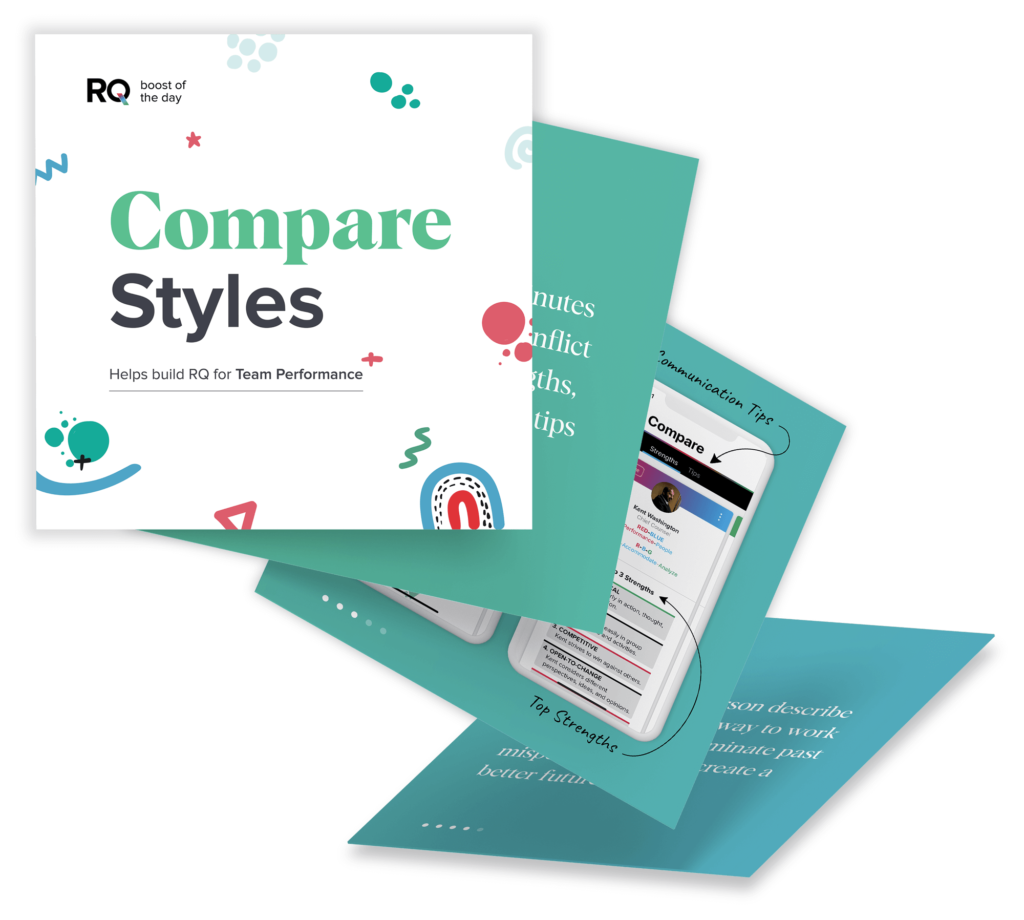Cross-functional team organizations are quickly replacing traditionally siloed departments. With more flexibility, opportunities for innovation, and improved organization and speed, it’s no surprise the World Economic Forum 2020 report identified cross-functional collaboration as a key leadership skill in this current decade.
Table of contents
- What is Cross-Functional Collaboration?
- Benefits of Cross-Functional Collaboration on Workplace Relationships

What is Cross-Functional Collaboration?
Put simply, cross-functional collaboration involves individual teams or representatives from separate departments working together to achieve a common goal. For example, a representative from the marketing department may help sales attract new leads for a recent product release, and a member from logistics would keep track of what is working and what isn’t. These employees utilize their individual expertise to drive success for the whole team.
When teams of diverse talent come together, innovation, collaboration, and learning multiply. Cross-functional teamwork helps foster relationships amongst teams who otherwise would have never crossed paths, creating a collaborative culture that benefits all levels of an organization. And while cross-functional teams are presented with their own unique challenges, taking the time to address these issues will result in a more engaged and collaborative workforce.

Benefits of Cross-Functional Collaboration on Workplace Relationships
1. Insight & Innovation
Creativity is a group process, and when people with unique skill sets and perspectives collaborate, creativity thrives. Cross-functionality transforms standard ‘group thinking’ and encourages ideas to flow in from all sides of the organization, making it easier to detect and devise improvements across the value stream. Moreover, learning from members with different motives and strengths broadens everyone’s perspective and boosts problem-solving skills. All these lead to clever and innovative solutions that may have never surfaced if these members continued working in siloed teams.
2. Collaborative Culture
Cross-functional teams naturally create a collaborative culture because members from different departments are working together to achieve a common goal. Shared decision making, regular team building, and adopting a shared language bridge the gap between siloed teams, fostering more collaborative and inclusive company culture.

3. Colleague Appreciation
People who don’t work regularly with one another take their cues from surface information or, at best, first impressions that were formed months, even years, earlier. This kind of judgment kicks in doubly so for remote workers or third-party specialists joining teams for specific projects. Working in cross-functional teams allows members to understand and appreciate the strengths and responsibilities of other departments and roles. For example, a developer and customer service representative placed on the same team may be working on opposite ends of the project, but discovering how both are keys to the success of the project allows them to share a common goal and foster appreciation for each other.
4. Opportunity to Develop Leadership Skills
One great benefit of cross-functional collaboration is allowing individual employees to lead the project. Every employee can have their chance to develop their leadership skills on a temporary team, encouraging them to adapt their communication, collaboration, and conflict management styles to the needs of their team. New leaders can pump life into a project, and, if successful, can be encouraged to seek permanent management positions.
5. More Engaged Employees
Employee engagement has seen a steady decline within the past few years, and the uncertainty of home vs. hybrid vs. a return to office life has organizations struggling to keep employees connected and on track. According to Gallup’s 2021 report, 51% of employees are disengaged in the workplace, while 13% are actively disengaged. These employees are not only hampering productivity but are directly affecting the bottom line.

Cross-functional teams can kill two birds with one stone, keeping employees engaged while increasing productivity across the entire organization. When cross-functional teams work together, they feel more connected, particularly across different departments. When team members feel connected, they develop common goals and trust one another. The cycle of disengagement is broken when employees are introduced to a new situation with new people sharing new ideas in a new environment. In addition, employees will feel more motivated when placed in a role specifically chosen based on their strengths and feel more accountable for their part in the team’s success.
6. Conflict Resolution
With a diverse team made up of members with different backgrounds, motives, and work styles, conflicting opinions are bound to arise. But conflict doesn’t have to be a “win or lose” situation – healthy opposition can lead to new ideas that solve continuous problems, providing an opportunity for people and teams to expand their skills and foster creativity. Conflict can in fact be a benefit of cross-functional collaboration- when opposing ideas are explored, a breakthrough of thinking can occur.
Compared to siloed teams, whose tight schedules and individual goals provide little incentive to work with other teams, cross-functional teams are expected to see a project through to completion. If the schedule seems impossible or there’s disagreement about a certain approach, these teams can’t just veto the project and move on to another. These teams must find a way to overcome conflict so the project can move forward. While it may seem like these teams are teetering on the edge of chaos, this is the ideal environment for innovation to emerge.
7. Team Performance
When teams master communication, collaboration, and conflict resolution, team performance skyrockets. Cross-functional collaboration places individuals in a unique environment where these three things are essential to their success. With an overarching goal at hand, members are more inclined to envision the group’s success as opposed to their own, increasing accountability and motivation. The bonus comes when this kind of team collaboration gets replicated back in home departments or functions, where it gradually builds as a model of interaction for teams across the entire organization. The best teams perform at a high level because they replace snap judgments with open communication, and make the effort to understand the best way to work with anyone.
For all the reasons listed above, cross-functional teams have the chance to revolutionize their entire organizational structure for the better. By understanding the strengths, motives, and roles of individuals across their organizations, employees can recognize how each member plays a part in the bigger picture – and where they can use their own strengths to drive success.

The benefits of cross-functional collaboration can become a transformative force in your workplace, but it will take time and experimentation to determine what works best for your organization. Our Core Strengths Platform can give your teams a head start on understanding each other’s work styles, embracing their diversity, and building trust so they can deliver exceptional results.

Eliminate past misperceptions and help teams co-create a better future together.
Download our ‘Compare Styles’ activity guide









